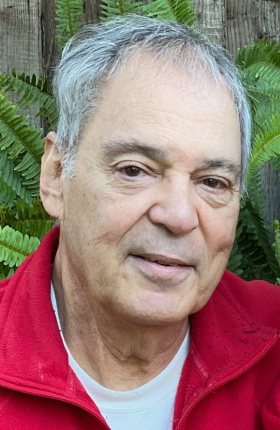 Lasting Memories
Lasting Memories

Richard Adamo
Feb. 13, 1947-May 11, 2025
Palo Alto, California
*Richard Adamo — beloved aerospace scientist and principal engineer at SRI — dies at 78*
Richard Adamo, a long-time Palo Alto resident who was instrumental in the development of launch safety during the Space Shuttle Era, passed away on May 11, 2025, following his decades-long battle with heart disease.
Richard was born in Manhattan on February 13, 1947, to parents Barbara and Nicolas Adamo. Anyone who knew him was familiar with the lore of his nun-led early education in Catholic schools. Those in the cloth of the Marists order were no match for young Richard’s keen and questioning mind, and he graduated early from Saint Agnes High School with a near-perfect SAT score and an offer from the state of New York to attend any college on their dime.
Richard signed up for Polytechnic Institute of Brooklyn but drifted after a particularly lively two semesters. He eventually earned his associate’s degree in electronics at the now closed RCA Institute and returned to earn his bachelor’s degree at Brooklyn Tech, during which time he was accepted for graduate school at MIT, Stanford and Cal Tech.
His university decision was cemented the winter of his senior year when, thawing his frozen mustache over drinks with a friend, he was shown a picture taken just a few weeks earlier of college students in shorts riding bikes down a sunny Palm Drive at Stanford.
Richard’s cross-country journey was as colorful as one would expect from a man who, never being one to pass up a challenge, attempted to do it on a 10-speed bike. He made it as far as Virginia and would have kept going if it wasn’t for the sunburn, or at least that’s how he told it. It would ultimately be a Honda 350 motorcycle that delivered him to Stanford and his electrical engineering master’s program, which also included a foray into psychology courses and the chance to participate in Phillip Zimbardo’s famous 1971 prison experiment — an experience he talked about up to his final days.
At that point, Richard wanted to be a “terminal graduate student,” but got the next best thing: an offer to work at Stanford Research Institute, or SRI, where he would go on to have a distinguished tenure of over 40 years.
Richard focused his research primarily on electrostatic charging of air and spacecraft, as well as the effects of lightning and electromagnetic pulses. He was also a research specialist at Lockheed Missiles and Space Company and a technical staff member at Rockwell International, among other roles.
The holder of five patents and the author and co-author of numerous technical reports, we imagine the details of Richard’s influence in the space and marine technology sphere to be vast. Lacking a security clearance ourselves, however, we’ll just have to take his word for it. Well, his word and that of his numerous colleagues-turned-dear-family friends, like Lt. Colonel Gary Lund:
“Richard was instrumental in developing the Online Lightning Monitoring System (OLMS) for the Government,” says Lund, who has served a long career as a leader in the U.S. Air Force. Lund explains how OLMS introduced a major leap in detecting lightning near space launches, offering far greater insight and functionality than earlier systems. This allowed the Government to proceed with launches confidently after lightning events, avoiding costly delays that had previously amounted to millions of dollars.
“Over 25 years after Richard rolled out the OLMS system at Cape Canaveral and Vandenberg Space Force Bases, it remains the operational standard helping assure safe access to space,” Lund says.
Richard’s friendships weren’t just isolated to those at work. He was loved by those from all walks of life and sustained many decades-long friendships. If you sat next to him at a dinner party, he’d be more likely to entertain you with original jokes made up on the spot than initiate conversation about his work. He would light up, however, if asked about his research projects, or if asked to recount the time he experienced zero gravity in an aircraft while testing out one of his mechanisms in the late 70’s — a video recording of which was recently digitized from 16 mm film.
It’s ironic that Richard’s heart would be his weakest link when it loved so dearly and so openly. This was a man who was a vegetarian almost his whole life, watched “Mr. Rogers” every morning in college, never judged anyone, and, for a period, tenderly raised pet chinchillas. He loved opera, theater and the arts, and was a season ticket holder to Palo Alto Players. He also loved to travel and was a voracious reader.
And of course, Richard loved his family most of all. He was a family man of the highest eminence, who would always be there to help, no matter what. He was the type of man to tell his wife and daughters he loved them daily. Thank goodness so many of us have his jokes, his stories and our own pride in his many accomplishments to carry his spirit on.
Richard is survived by his wife, Elizabeth; his daughters, Sophia and Madeline; and his grandchildren, Lizzy, Wren and Ariana.
In lieu of flowers, donations can be made in Richard’s memory to his favorite charity, the Tunnel to Towers Foundation. https://t2t.org/